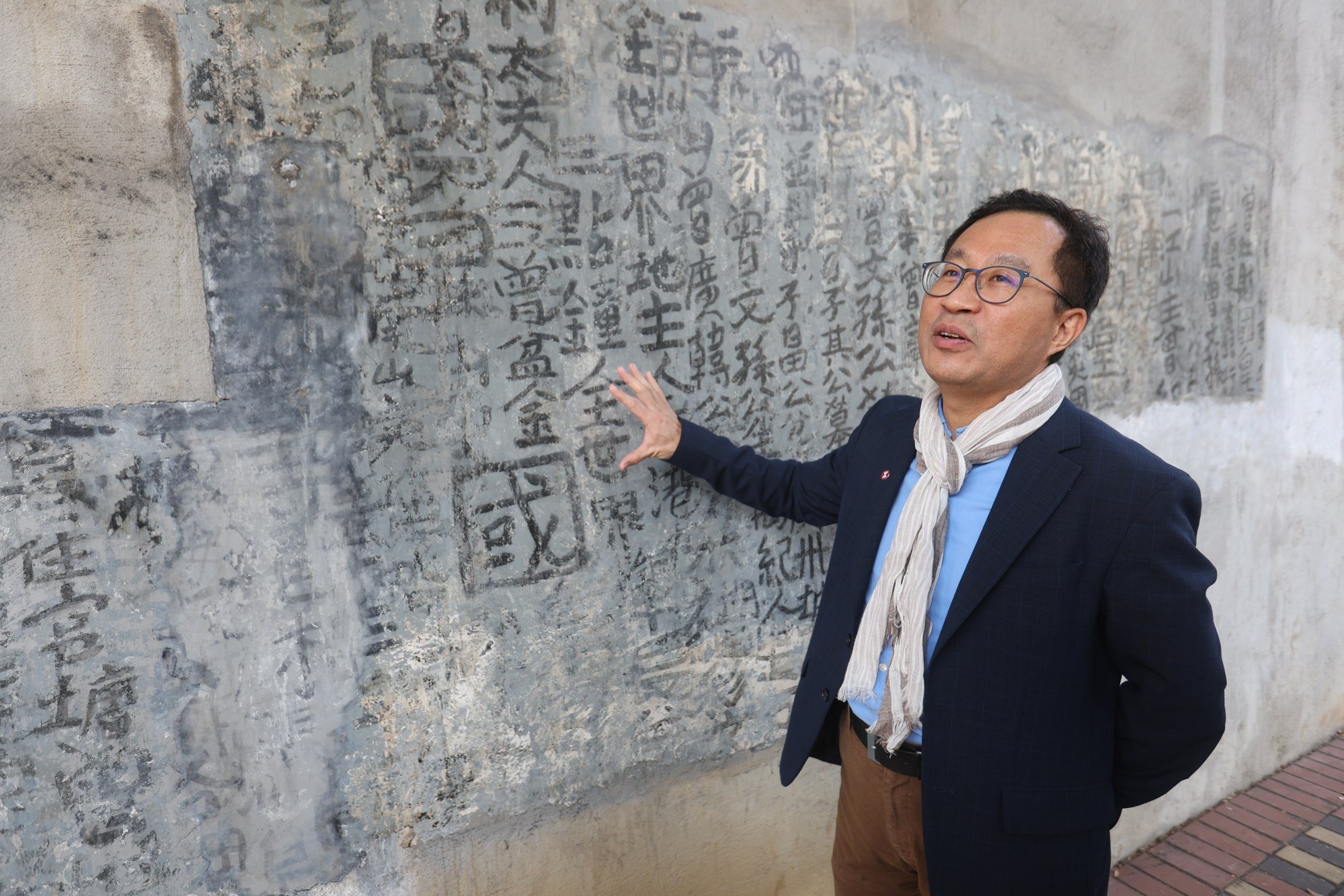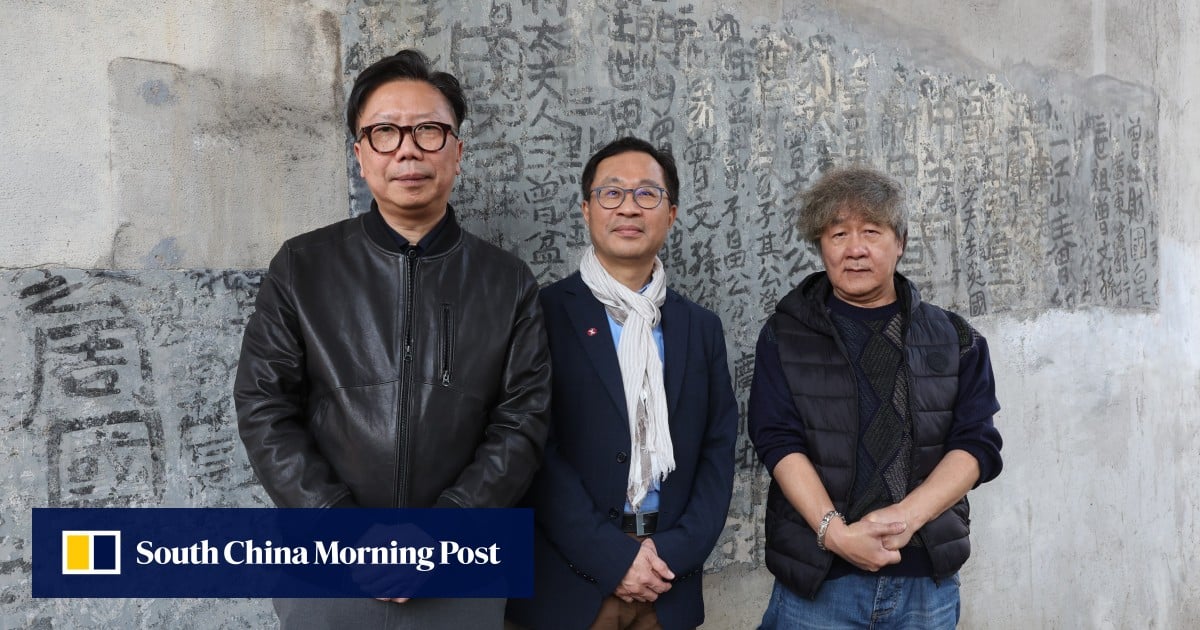Tsang’s works on different media, such as paper, cloth, and even a pair of doors, are now in the collection of Hong Kong’s visual culture museum M+ and have been sold at top auction houses such as Sotheby’s and Christie’s fetching as much as HK$500,000 in 2009.
Before ‘King of Kowloon’ Hong Kong barely had any graffiti. Look at it now
Before ‘King of Kowloon’ Hong Kong barely had any graffiti. Look at it now
Born in 1921 in mainland China, he arrived in Hong Kong at 16 and made the city’s walls, pillars, postboxes, electricity junction boxes and lamp posts his canvas between the mid-1950s and early 2000s with brushes, bottled ink, and sometimes paint.
Tsang, who earned little working as a labourer, wrote in striking black fonts without punctuation. He had an eccentric streak and called himself the “King of Kowloon” with his much-repeated claim of sovereignty over the area during the city’s days under British colonial rule.

For a long time, his art was regarded as graffiti by a toothless, shirtless man on crutches and was swiftly removed or painted over.
In 2009, two years after his death, Tsang’s long-time friend Joel Chung Yin-chai, founder of the King of Kowloon Culture and Art Foundation, started campaigning to preserve his works.
That led to the Leisure and Cultural Services Department deciding to protect the graffiti on a column at the Tsim Sha Tsui Star Ferry pier and a lamp post in Ping Shek Estate.
Chung, 59, said an exhibition he helped to organise in 2021 drew more people to appreciate Tsang’s works, and the visitors included then city leader Carrie Lam Cheng Yuet-ngor and other senior officials.
The exhibition explained the messages behind Tsang’s works, referring to his pacifist message and philosophical musings.
“He also wrote about mutual respect, and that stronger countries do not necessarily have to colonise weaker ones. He was against unfair treatment of the colonised,” said Chung, who helped to look after Tsang in the last 17 years of his life.
Restoring the calligraphy in Mong Kok took some doing, according to John Lau Ka-hung, project manager at IDG Design and Engineering, which was in charge of the preservation work.
“The biggest difficulty was deciphering how big the area was and deciding how to restore it,” Lau said.
We are now showing street art in its rawest form
There were several layers of graffiti and damage caused by water too. Lau said Tsang wrote over the same spot at least three times around 1996 and 1997, returning every time his work was painted over.
He used different types of ink and paint – some more permanent than others – which meant there were overlapping characters and special solutions were needed to uncover the calligraphy.
“The difficulty of this restoration project also lay in determining which layer to preserve,” he said. “If we found a significant number of characters that could be understood together, we’d keep that layer.”
The team applied four layers of transparent protective coating onto the graffiti that guard against damage by moisture and light.
“We are now showing street art in its rawest form,” Lau said.
Restoration specialist Fong Tam said the work took him 10 days. At first, the planned restoration was about three metres wide, but eventually, five metres of calligraphy were uncovered.
Tam said it was exciting to discover every new character Tsang painted. “What he wrote about was very eclectic, there are even expletives,” he added with a chuckle.
Exhibition marking 20th anniversary of Hong Kong diva Anita Mui’s death opens
Exhibition marking 20th anniversary of Hong Kong diva Anita Mui’s death opens
Cheng Kwok-wai, MTR Corp’s senior project architecture manager, said a plaque has been placed next to the restored graffiti, with information about the artist and his works.
“This is to introduce where the calligraphy came from, so that the next generation will know Hong Kong once had a legendary figure like him,” he said.
Tsang’s old friend Chung hoped the restored artwork would not be reduced to “a mere Instagram spot or a public relations tool”.
“What message does it bring across once we have preserved his works? What will people who come to see the graffiti get out of the experience?” he asked.
No switching off Hong Kong’s bright city lights as shops replace old neon signs
No switching off Hong Kong’s bright city lights as shops replace old neon signs
He said the authorities had failed to protect Tsang’s works adequately, as some had been painted over accidentally and had to be salvaged.
In 2017, for example, a contractor painted over the calligraphy on an electric switch box near Sam Shan Kwok Wong Temple in Kwun Tong.
Although Tsang became well known during his lifetime and earned an income from advertisements, films and the sale of his work, Chung said he never cared about money and relied on government welfare to get by.
His works were displayed at the prestigious Venice Biennale in 2003, yet he never regarded himself as an artist.
“I once asked him if he considered himself an artist. He answered, ‘What is art? I have no idea.’” Chung recalled. “The graffiti was just something he was compelled to do and he did not care how much his works sold for.”

